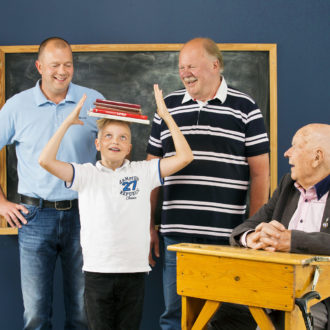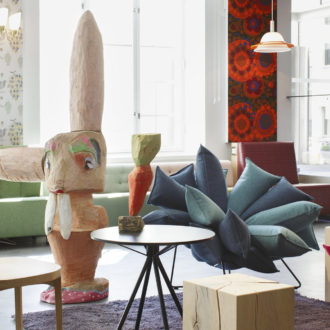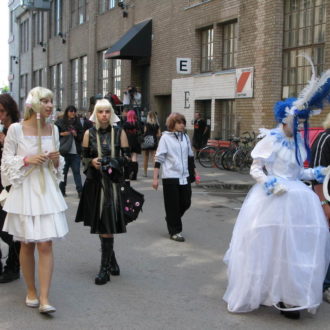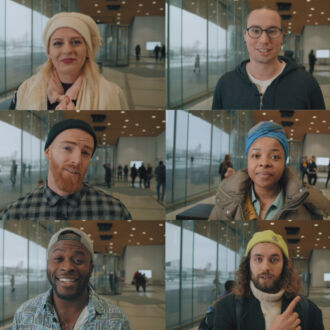In cooperation with museums, theatres and concert halls, Art Testers sponsors and arranges two events per school year for each participating class – one event close to home and the other farther away.
Known as Taidetestaajat in Finnish and Konsttestarna in Swedish (also one of Finland’s official languages), the project is set to last for three academic years, concluding in the spring of 2020. At close to 60,000 students per grade, this means that approximately 180,000 children will participate while between the ages of 13 and 15. With these numbers, Art Testers professes to form the biggest art review in the world.
Solving the logistical challenges is the responsibility of a nationwide network of coordinators from the Association of Finnish Children’s Cultural Centres. One of them is Helsinki-based Siiri Oinonen.
“Art Testers came about in celebration of Finland turning 100 in 2017,” she says. The country gained independence in 1917. “When the Finnish Cultural Foundation was first established in the 1930s, youngsters went around collecting donations door-to-door. The capital they raised formed the core of the foundation, and this project is a way of giving something back to young people.”
Seeing red

Knowing where to draw the line: Students from Meilahti Upper Secondary School went to see “The Red Line,” a theatre performance by Timo Ruuskanen (left) and Tuukka Vasama of the Red Nose Company.Photo: Tero Ahonen
In autumn 2017, eighth-graders from Meilahti Upper Secondary School in Helsinki attended Punainen viiva (The Red Line), a theatre performance by Red Nose Company. In the spring the students are travelling to another theatre event in Lahti, about 100 kilometres (60 miles) northeast of the capital.
Art teacher Marita Brace appreciates the scope of the project: “I often take my students to galleries, but they have chosen to study art and are motivated. Art Testers, on the other hand, allows students with little or no previous experience of art to engage with it. It’s also very equal, since students from regions with fewer cultural options get to travel for an art experience – sometimes quite far.”
Funding for Art Testers comes from the Finnish Cultural Foundation and the Swedish Cultural Foundation in Finland. A survey by the former found that 97 percent of schools would go to art institutions more often if it was cheaper.
Eighth-graders Jenna, Pihla and Aada have all enjoyed being part of Art Testers. “It’s nice to have learning experiences outside of school sometimes,” says Pihla. Although all three are experienced theatregoers, it was a positive new experience to see something they didn’t choose themselves.
Filling in the blanks
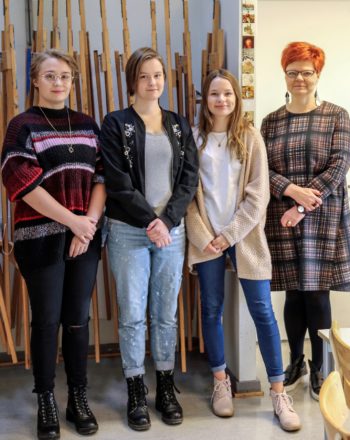
From left: Jenna, Pihla and Aada line up with their teacher, Marita Brace, in front of a row of easels in their school’s art classroom.Photo: Joanna Nylund
“The play was…different,” says Jenna, and smiles. “A little hard to understand, but also interesting for that reason. It made me think.”
Aada agrees: “The actors wore clown masks the whole time, and that was interesting because it made me use my imagination more, to fill in the blanks.”
Before an event, students receive material to prepare them for what they are about to experience. Afterward, teachers are free to continue processing reactions with the students. However, the main focus is on giving feedback online.
After attending an event or exhibition, the teens fill out a quick survey on the Art Testers website, which receives praise all around. “They seem to understand what appeals to this age group,” says Brace.
The students agree. “The survey questions felt relevant, like what our mood was afterwards and if we’d consider going back,” says Pihla. They were also satisfied that giving feedback online didn’t require a lot of additional writing on their part.
Inspiring questions, feelings and thoughts
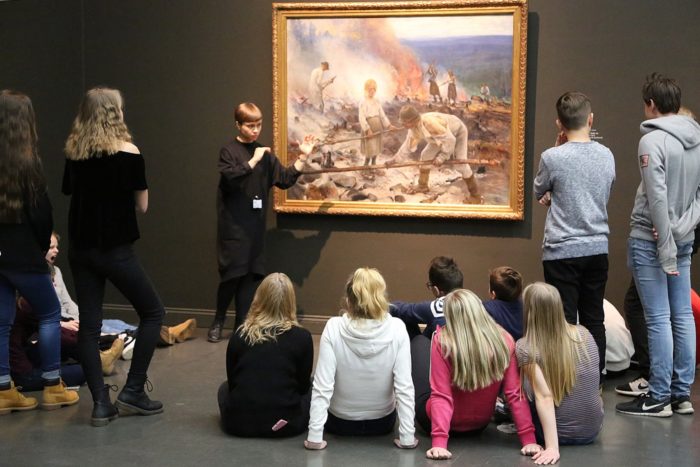
A group of teenage students listen to a guide reveal the secrets of Eero Järnefelt’s “Under the Yoke (Burning the Brushwood)” from 1893, one of Finland’s most famous paintings, during an Art Testers excursion to Helsinki’s Ateneum Art Museum.Photo: Jani Kivelä/Art Testers
The results are displayed in animated graphs on the Art Testers public website. Under “What feelings did the art inspire?” a heart fills with colourful stripes corresponding to choices such as “happiness,” “whatever” and “peace,” each accompanied by a percentage.
Students can also write additional comments. Ranging from “Really loved it” to “I fell asleep,” the comments provide interesting reading.
Oinonen hopes that the art venues involved will make use of the feedback when planning future events. “One of the purposes of art is to raise questions, to help us feel and think new things,” she says. “These events all have adult audiences in mind. We have, of course, made sure that the subject matter is suitable for eighth graders, but we are not dumbing anything down. We want to challenge the students a little, but also make it easier for them to seek out art on their own.”
Aada, Jenna and Pihla all recommend Art Testers. “I really appreciate art and would like others to have the chance to discover it as well,” says Jenna.
By Joanna Nylund, November 2017
